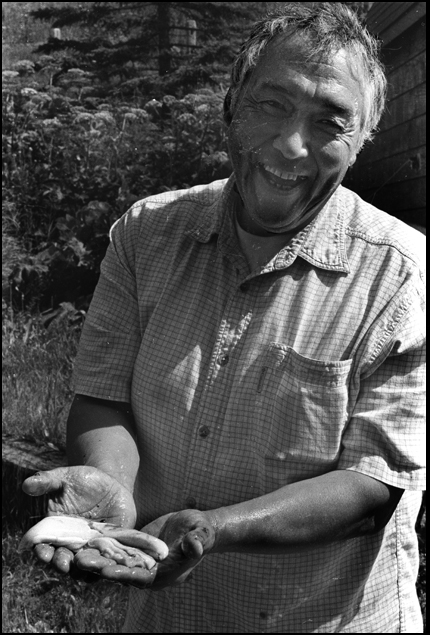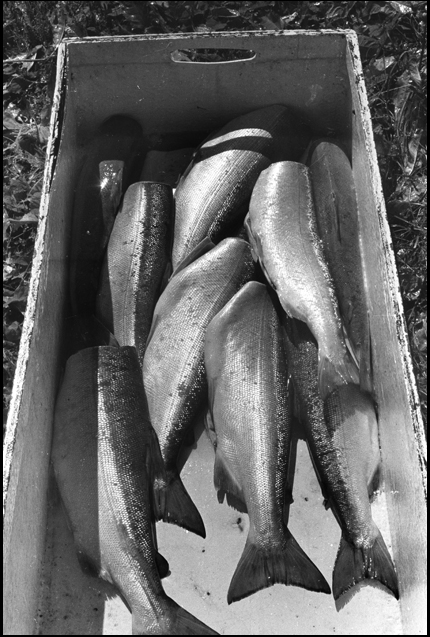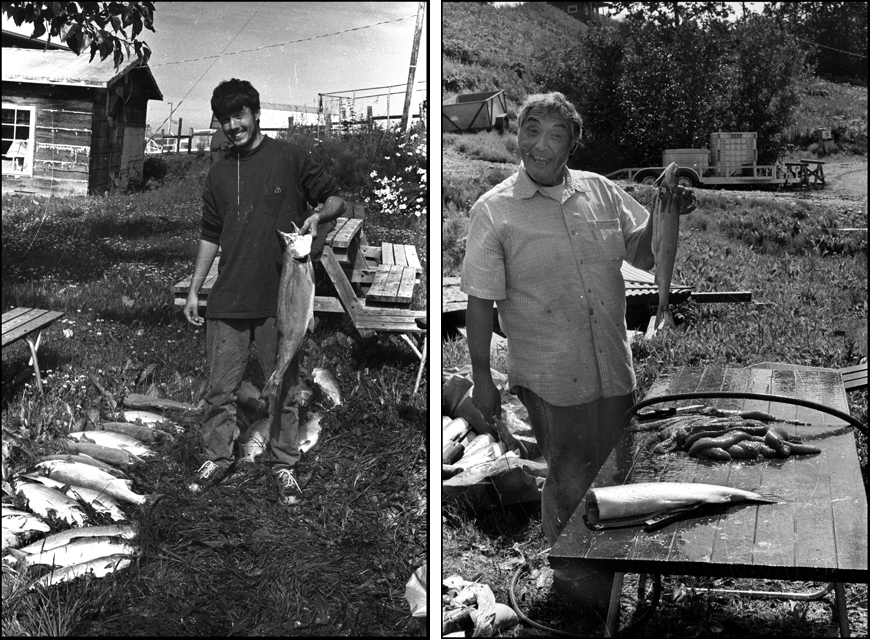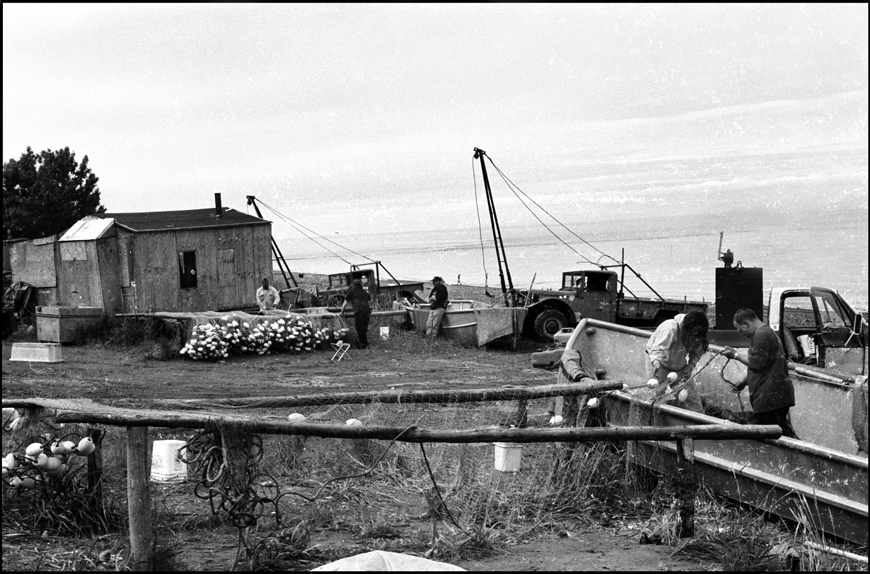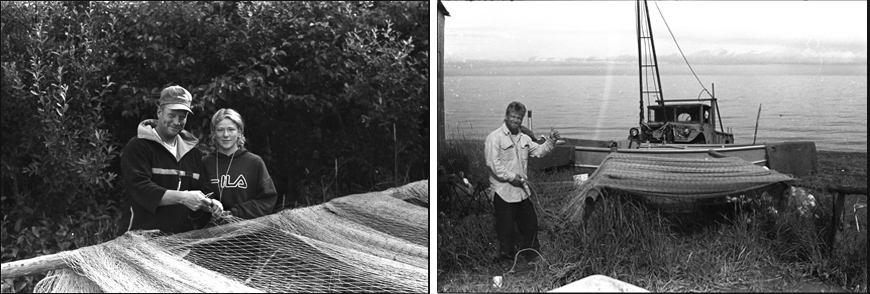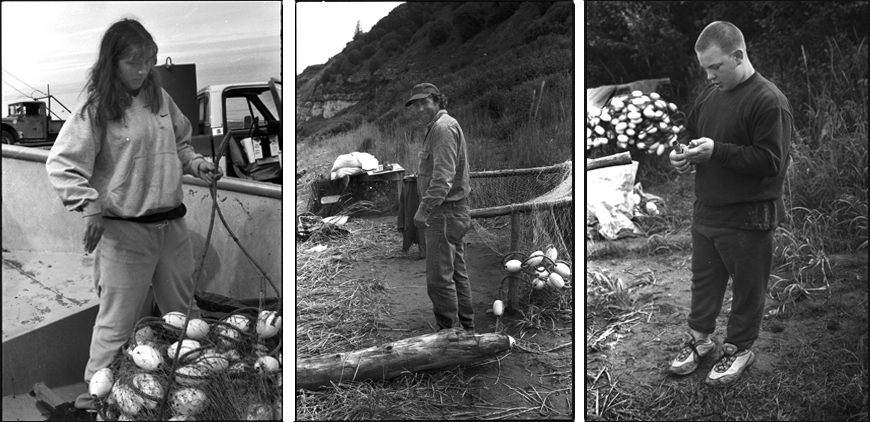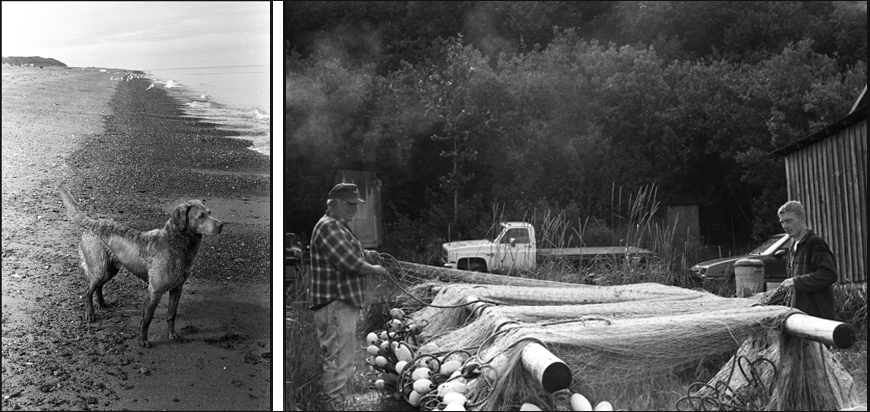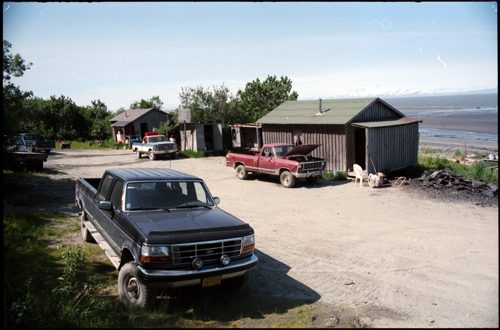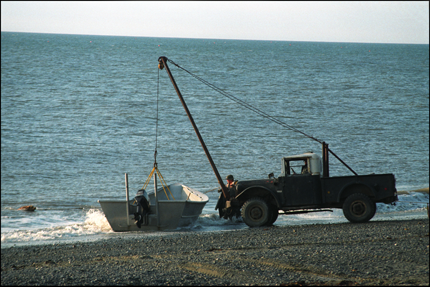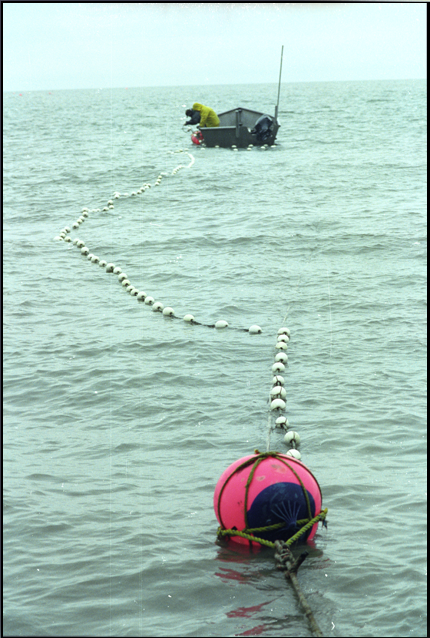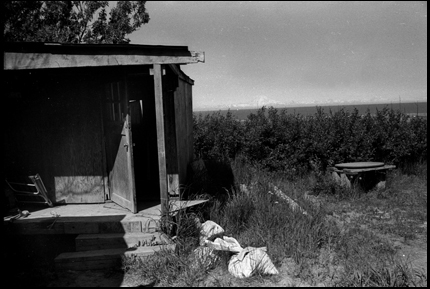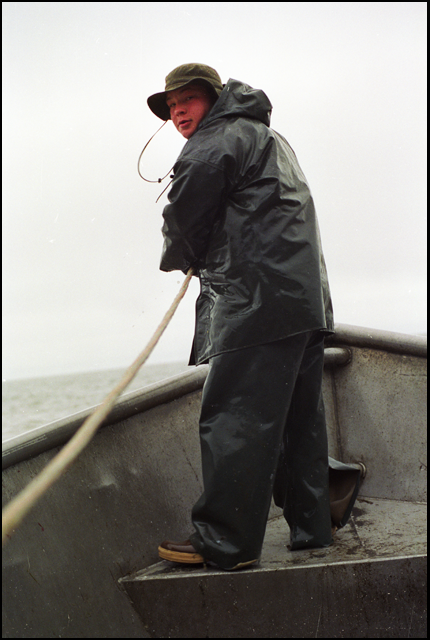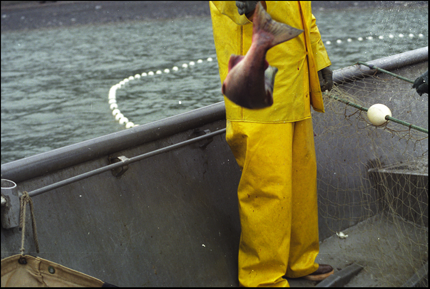My most interesting find I've had in relation to my photography is a collection of photos that I took before I went through the art photo class at UofL and the photojournalism program at WKU. They were the last photos in one of my oldest binders, which are chronologically organized, and relatively forgotten since I had placed more emphasis of importance on the photos I took during the education process.
These photos are the oldest that I have and mark my emerging interest in photography about a decade ago. I went to Alaska for the summer of 2001, when I was 20, to work on a farm. That situation turned out to be awkward so I left the farm and ended up working with a family who does commercial set-net fishing on the north side of the original coastal village of Ninilchik, the small town on the Kenai peninsula where I was located for the summer and where my family-friend Regina lives.
I bought a pentaxk1000 and three lenses; a 50mm, 28mm and some zoom before traveling up there. I had the intent to take a lot of photos of what I was going to experience... maybe an eagle or something. But I took about a dozen rolls of color and black and white of the people and places I encountered.
The value I find in these is not in the technical execution or the thoroughness with which I documented things because they demonstrate neither in the proportions my education insists. What they do demonstrate is sincere curiosity and desire to communicate and that is why I find these photos valuable. I wasn't assigned this and I wasn't being paid or graded. I simply wanted to bring back something from my unique experience that could be shared and remembered.
So, my intention is to finally share these photos in an effort to reorient myself in my own photographic past. I tell the story of this summer every now and then while conversing so it's exciting to think that there are still visual remnants a decade later which I can use to communicate more specifically.
It will likely be a bit jarring to bounce between color and black and white in the same visual context, so I'll try my best to organize them in accomodation, and several of the photos are scratched to the point where I don't have the time it would take to repair them, so the scratches will just have to be decorative reminders of time past.
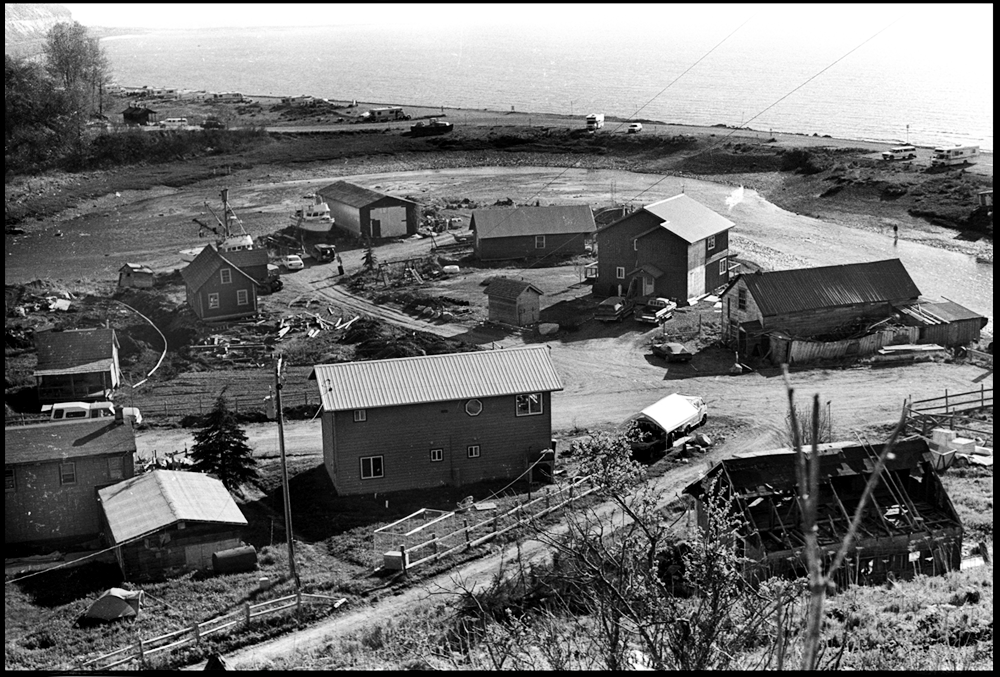
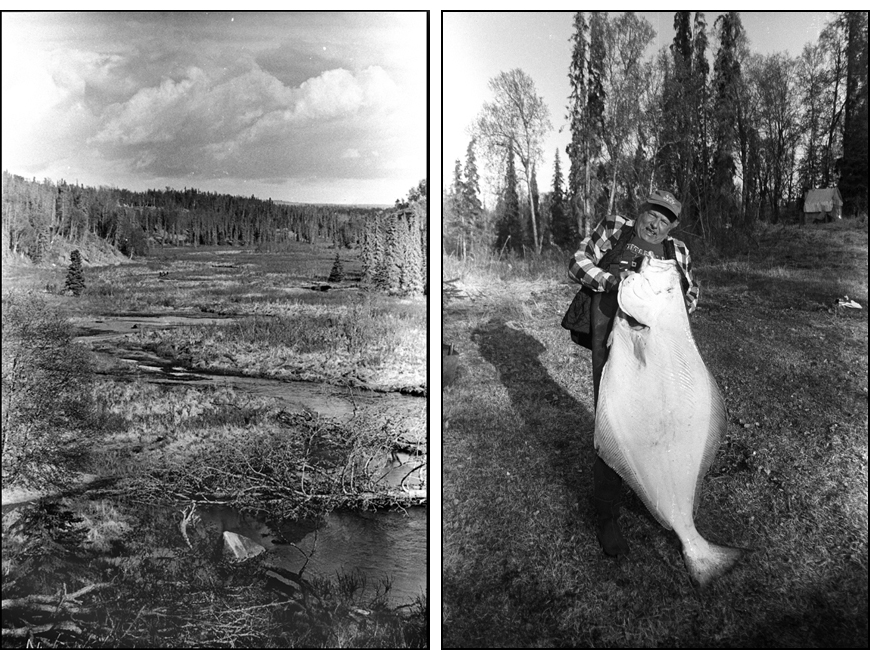

Ninilchik, AK
Ninilchik is a small town on the Kenai peninsula in Alaska, south of Anchorage, home to about 800 people. The town consists of the original Ninilchik fishing village (top) located where the winding, narrow Ninilchik river (above left) meets the Cook Inlet. The rest of the town lies on top of the bluff that spans the perimeter of the peninsula. Up the bluff there is one small strip of businesses that run along the Sterling Highway. It's the only highway available to reach Ninilchik from Anchorage along with Soldotna, Kenai, and Homer. A few tourist shops, a general store, a chinese restaurant, a coffee stand or two, the Inlet view restaurant and bar, the Deep Creek Cannery, a high school and a small library lie on Ninilchik's quick stretch of the Sterling Highway with no stop lights and few street lights. 40 miles north is Soldotna and 40 miles south is Homer, both are larger towns with a Fred Meyer's in Soldotna.
Tourism and fishing (below right) are big draws for the area. Starting in June the little fishing village and surrounding area fill up with Rvs, many from the “lower 48”, some big enough to have to be pulled by semi trucks. Salmon fishing, digging for razor clams at the frequently extreme low tides, charter fishing for halibut (top right) and the decorative Russian Orthodox church on the hill (below left) above the fishing village add to the towns tourist appeal. People flock there for the salmon and the main run of King salmon usually starts in early June. The red salmon runs begin in late June and last until mid august triggering the commercial fishing in the area into action. The silver salmon run happens later in the season around July/August. Of course salmon don't notify the public of their schedule so a lot scouting by fishermen neighbors goes into the local awareness of the salmon runs. Whether the runs are going to be big or not is always a topic of speculation.

Drift net commercial fishing boats wait in the small Ninilchik harbor (above left) near the the mouth of the Ninilchik river (above right) where it meets the Cook Inlet. Mt Redoubt, an active volcano, rests on the horizon. It's last major eruption was in 1989.
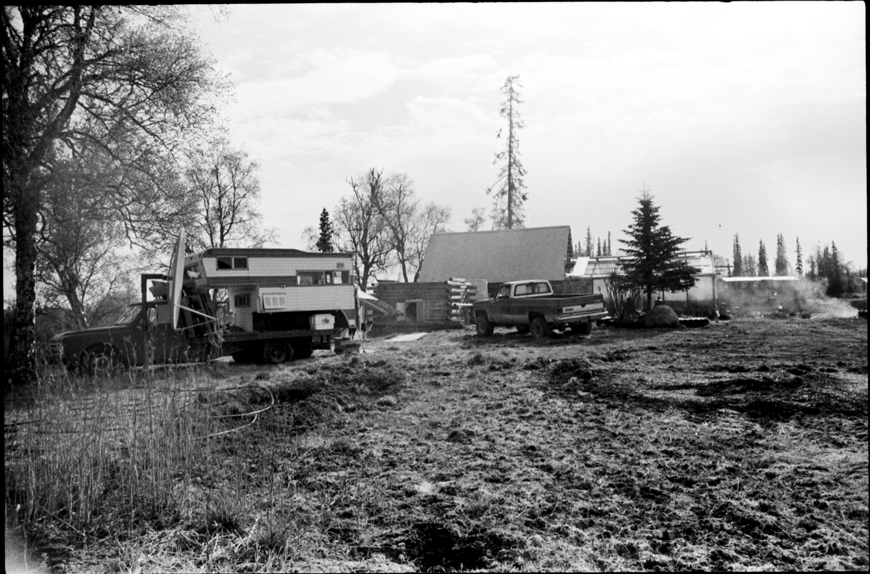
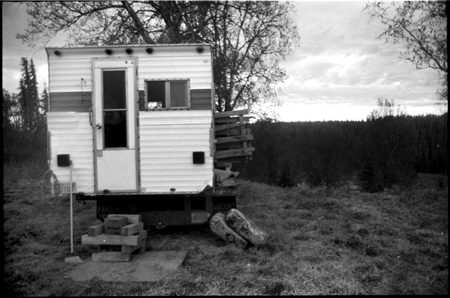
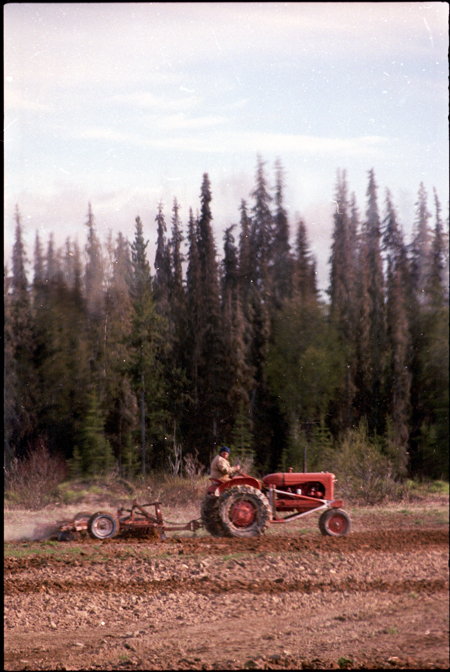
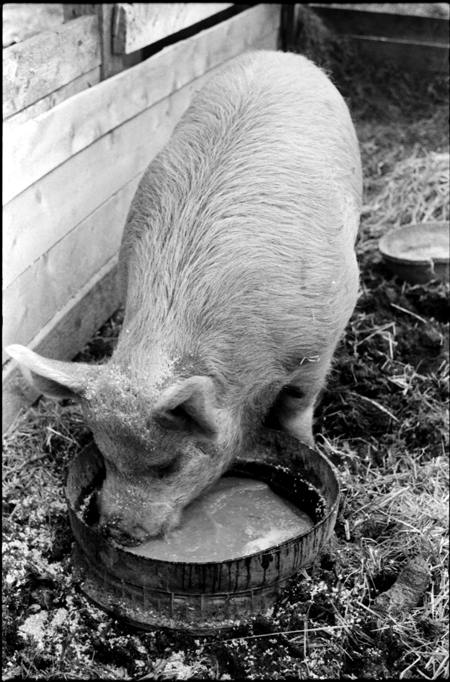
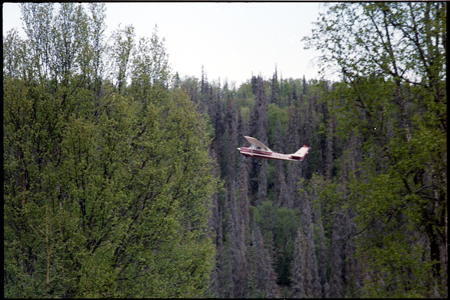
Hideaway Mike's Farm
Hideaway Mike picked me up at the airport as the ambassador of Alaskan burliness. I don't recall what the exact words were that were exchanged but at some point while waiting by the baggage claim and during the car ride to Ninilchik there were passing comments about local whorehouses, bar fights, distrusting the government, and a story about how it gets so cold at the top of Alaska that electricity freezes in the lines. For those who are as naive as I was at the time, electricity does not freeze... He was testing me on his stupidometer.
I was partially aware of what I was getting myself into. We were going to be logging on his land. I was excited about this because I had no idea what I was excited about. Before I flew up there I had my uncle, who lives in Eastern Kentucky and builds cabins out of trees he cuts down, explain to me how to use a chainsaw and fell a tree. I remember a little about the process but mostly I remember a point in the conversation where his eyes widened in anticipation of my impending maim.
Mike's place was about 2 or 3 miles down a logging road with two gates, one at the entrance and one halfway through. You would have to get out of the truck to open, close and lock each. Eventually the road opened up to the small rustic compound where I would be staying. His cabin had a greenhouse attached to it where he grew tomatoes upside down from the ceiling in troughs. He had 3 or 4 dogs which he would tie up to his sled. He had plans for some type of elevated hot tub structure which sat next to his house in a half-built log cube form, a barn with a cow and a pig, a big field for growing potatoes, and a bigger one for hay. I stayed in a trailer on a flatbed pickup that I cleaned out upon my arrival located next to his house on the bluff overlooking the Ninilchik river. There was an outhouse and no shower. There may have been electricity. I don't remember how he got his water.
His plan was, "You'll be out there chopping down the trees!! And I'll come in with the bulldozer and stack them into piles!!" He had an intense presence. His adrenaline gland was either steel-plate-reinforced or transplanted from a gorilla mid-escape from the zoo, maybe both. He would pound his fist on the counter at the burrito stand we would go to some mornings with unabashed aggression demanding, "Last time I came here you didn't give me enough sauce!! You didn't put enough salt on it either!!" I considered the likelihood of this being some raw, grizzly, neighborly Alaskan joking around but the mixed look of indignation and fear on the face of the woman behind the counter made it clear that he just enjoyed being a dick.
He was capable of not being crude though. He made me dinner several times, told me about his plans for a field of wildflowers at the part of the road near his cabin, about the "one that got away", a nurse from texas I think, and he gave me a nickname. A conversation with him was like a gauntlet where there were few correct movements I knew of to proceed, so the majority of my responses were "yea yea". He said, "From now on your name is YaYa!!" I couldn't help but think that at some point in time there probably was a foreign indentured servant with this exact name.
There was one day in my brief stay at Hideaway Mike's farm that I was enlisted to frantically chase an escaping hog. Mike and Regina were standing outside by the potato field when they informed me that the hog was attempting to go AWOL. It was up to me to confront the mammal and in the name of humanity assert dominance over the simple creature. My approach could only be described as "fake it til you make it...go back to it's pen." It defiantly stood in the middle of the potato field fully charged by it's breakthrough towards freedom and wielding two 4 in. tusks beneath it's fat jowls. I approached the beast as Mike and Regina stood chatting with arms crossed at the edge of the field like high school coaches at a scrimmage. I stared in it's face and got a clear look at our differing interests. He wanted to leave the farm and I was still unaware that I should do the same.
I stood in front of it in an improvisational pig barrier stance with my arms out to the sides and my feet spread apart for stability, weaving and hopping left and right to block it's intention to get past me. I yelled things at it. It snort growled at me and took off to the side. I ran after it clomping through the dry sponge-like field in my boots that didn't quite fit me right. I was in hot pursuit as it rounded the house and I saw a chance to get in front of it as it ran the perimeter of a small wooden deck. I would cut him off on the other side by jumping on top of the deck and then leaping off the other side landing in front of him in my newly discovered improvisational pig barrier stance. I would yell, "ha HA!" and then he would cower and submit. But my misfitted shoes fumbled my body over the edge of the deck and I landed on all of my weight. When my body hit the wood the pig stopped for a minute and looked at me in some mixture of "what is going on?" and maybe "Are you Ok?". I got up and picked up a stick and started hitting it's tough skin trying to corral it like I saw Mike do. Mike jumped in after he felt my pig wrangling skills had been sufficiently tested and helped get him back to the pen.
My stay was short at Mike's but while I was there we both took a few flying lessons. I had been taking lessons before I went up there since my father is a flight instructor. He took a competitive edge towards the whole situation and on the day that I skipped the lesson he made sure to fly circles over the farm and then buzz my camper along the bluff.
I never chopped down any trees with him which is a good thing because his chainsaw was as big as me. I luckily got a line from my friend Regina about the chance to do commercial setnet fishing instead. I jumped on the opportunity and was able to leave his farm in a hasty escape after about 2 weeks.




